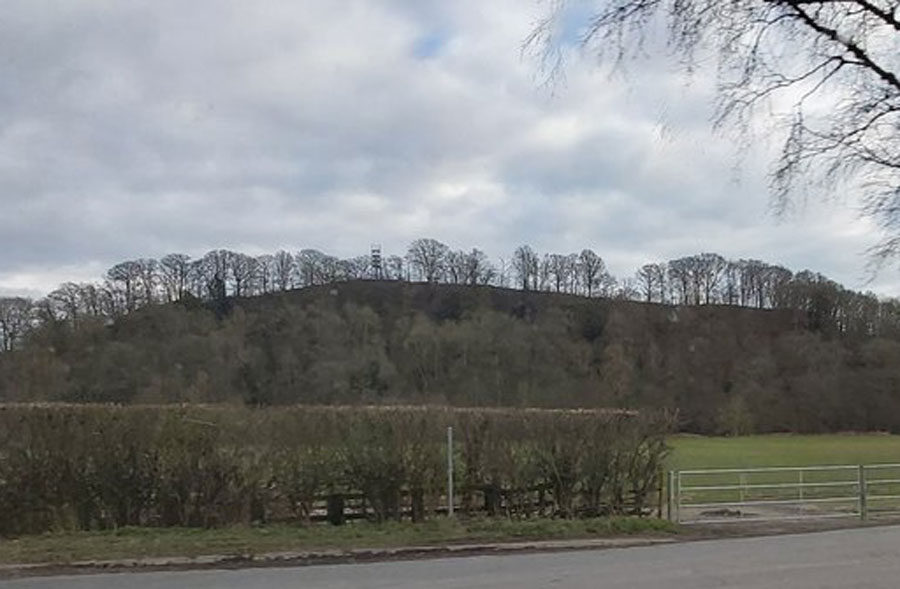 |
Why we have the Teme at Knightwick - and interesting tales and facts re. Rosebury rock.
Before the last ice age the river Teme flowed south from Leintwardine towards the river Wye. The melting waters found their way blocked and were forced to cut a new route over what is now Downton Gorge - it flowed on towards Ludlow. Turning south and skirting Clee Hill the river flows through an area where three counties meet. The valley is planted with hops and bush orchards clothe the lower slopes of the valley sides.
On into Worcestershire; and travelling south. The steep slopes that fall from the gently rolling plain above are wooded and dissected by streams and dingles. The valley bottoms are narrow but rich and fertile. Traditional hay meadows are giving way to more intensive farming but the standard orchards once so characteristic of the lower hillsides of the valley can still be seen south of Tenbury Wells.
Osebury rock Originally [Rosebury rock] at Knightwick forces the river once more to change its course.Osebury Rock (or Rosebury Rock) is a remarkable cliff with dense woodland on the River Teme which, according to Edwin Hartland in his 'English Fairy and Other Folk Tales' (1890), has an association with fairies. Accordingto tradition, that interesting headland called Oseberrow, or Osebury (vulgo Rosebury) Rock, which lies not far from Alfrick, and is situated upon the border of the river Teme, in Lusley, opposite to Knightsford Bridge, was a favourite haunt of the fairies (vulgo pharises). It is said they had a cave there (which is still shown); and that once upon a time, as a man and boy were ploughing in an adjoining field, they heard an outcry in the copse on the steep declivity of the rock; and upon their going to see what was the matter, they came up to a fairy, who was exclaiming that he had lost his pick, or pick-axe. This, after much search, the ploughman found for him; and thereupon the fairy said if they would go to a certain corner of the field wherein they had been ploughing, they would get their reward. They accordingly went, and found plenty of bread and cheese, and cider, on which the man feasted heartily; but the boy was so much frightened that he would not partake of the repast.
It also is said that upon another occasion a fairy came to a ploughman in the same field, and exclaimed:
"Oh, lend a hammer and a nail, which we want to mend our pail"
There likewise is a saying in the neighbourhood, that if a woman should break her peel (a kind of shovel used in baking bread), and should leave it for a little while at the fairies' cave in Osebury Rock, it would be mended for her.'
©peh
